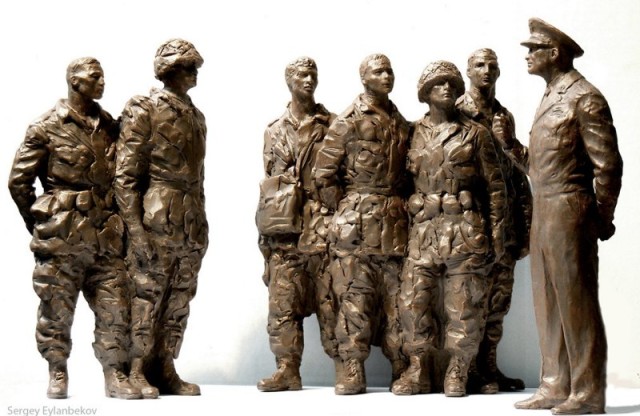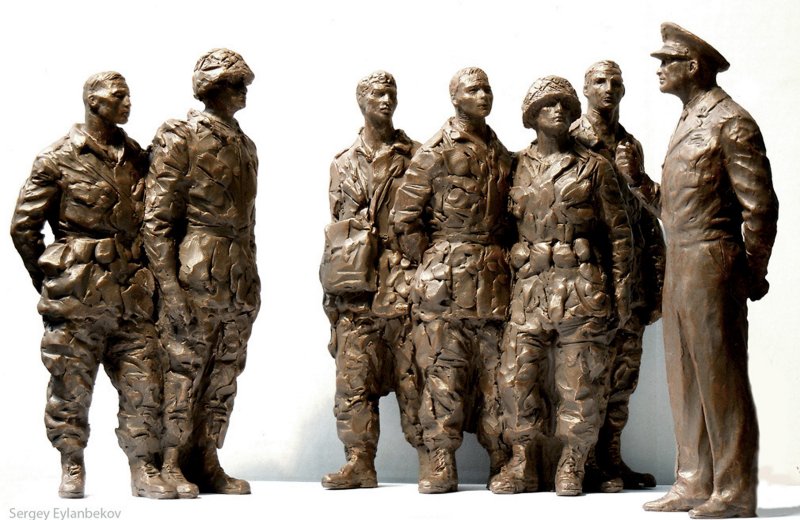
There is a battle being waged over the plans for a Washington memorial to President Dwight Eisenhower.
Some of the delays are expected. Funding has been an issue – the cost of the Eisenhower Memorial is estimated to be $140 to $150 million. The finance chairman of the Eisenhower Memorial Commission is former Kansas senator and World War II veteran, Bob Dole. Dole has led the effort that raised more than $170 million in private donations for the National World War II Memorial. Needless to say, he is the right man for the job.
At 92, Dole worries about the delays surrounding the Eisenhower Memorial – he wants to see the Eisenhower Memorial erected before his time runs out. Only 855,000 of the more than the 16 million men and women who served in World War II are still living. Each year, sadly some, 180,000 World War II vets pass away.
Such delays on memorials are not new. Projects like these rarely get completed in a timely fashion. The Franklin Roosevelt Memorial, which opened in 1997, took 42 years to complete. The Washington Monument was dedicated in 1885, the Lincoln Memorial in 1922, the Jefferson Memorial in 1943. Presidential memorials are very slow to construct even in the 21sth-century. Congress authorized the Eisenhower Memorial in 1999, but according to the law, construction on the memorial cannot begin until full funding has been achieved. What Bob Dole is hoping to do with his private funding efforts is to get around Congress’s power to speed up the start of the Eisenhower Memorial. The land for the memorial was selected in 2005 by the Eisenhower Memorial Commission. The four-acre site is located between the National Air and Space Museum and the Department of Education, both of which Eisenhower helped create.
The question of the location settled, other delays soon came from an unexpected source: the Eisenhower grandchildren. They objected to the extravagance of the original design for the memorial, designed by famed architect Frank Gehry, who is best known for his sculpture-like Guggenheim Museum in Bilbao, Spain and Foundation Luis Vuitton in Paris. A more simple and unadorned memorial would be more appropriate, the family said, to their grandfather’s memory. Eisenhower was not in many ways a simple and unaffected man. In respect to the family’s wishes, Congress has held back funding, even though the memorial has received the governmental approval it needs from the Commission of Fine Arts and the National Capital Planning Commission.
The family’s initial reaction to Gehry’s presentation was in 2011. Anne and Susan, Eisenhower’s granddaughters, considered Gehry’s work overblown and too focused on their grandfather’s past in Kansas. Their brother, David, resigned from his position at the Eisnhower Memorial Commission, to show his support for his sisters’ request that the design be rethought.
The grandchildren were not the only ones to protest the design. It drew criticism from many corners. The design sketches out 10 pillars, each eight stories high, which are intended as links to the National Mall’s classically inspired architecture. These pillars also support three transparent, stainless steel, mesh tapestries, which portray the Kansas of Ike’s childhood. In the center of the memorial, a small sculpture of a young Eisenhower sits on a wall, surveying his future. Beside that are two bas-relief sculptures of Ike in scenes showing him at the height of his powers as a World War II general and president.
“It simply defies logic and decency to design and build a memorial to Dwight Eisenhower without obtaining the approval of the Eisenhower family,” Republican Congressman Ken Calvert of California told the Washington Post last year.
Gehry’s redesign of the memorial erased the two smaller tapestries, and there were fewer pillars, but the Eisenhower grandchildren were unconvinced. The statue of a young Ike, the two bas-relief sculptures of him as general and president, and large mesh tapestry of Kansas remain. In a letter dated September 15, 2014, the granddaughters, Anne and Susan offered the alternatives they had in mind. The first of which was a “simpler design” that “would eliminate the towering scrim and all the pillars.” The second alternative was a redesign competition open to all entrants, including Frank Gehry.
However, by the year 2015, the Eisenhower family had toned down its comments. ”We have decided not to make any comments at this time except to say how deeply appreciative we are of the many distinguished Americans, including all the living former presidents, who are supporting the building of an Eisenhower Memorial in Washington, D.C.”
How would Eisenhower, so brilliant at dealing with the Allies in World War II and Democrats during his years in the White House, have responded to the battle over his own memorial? One could argue that he would have been sympathetic to the cause of creating a memorial for the remaining World War II vets, but probably would have shuddered at the use of his own image to do so. In his own words.
“Humility must always be the portion of any man who receives acclaim earned in the blood of his followers and the sacrifices of his friends…his honors cannot hide in his memories the crosses marking the resting places of the dead,” Ike observed in an address he delivered at Guildhall in London in 1945.
According to Michael Korda, the most penetrating biographer of President Eisenhower, it would be impossible to imagine the other World War II generals, such as George Patten or Douglas MacArthur, issuing such a statement and extolling the virtues of humility. This humility was key to Ike’s character is revealed and it’s that particular quality that the memorial to him needs to capture. Let us hope that the memorial is soon started- Ike was a great man and deserves to be commemorated, but it should be in a manner that captures his character.
